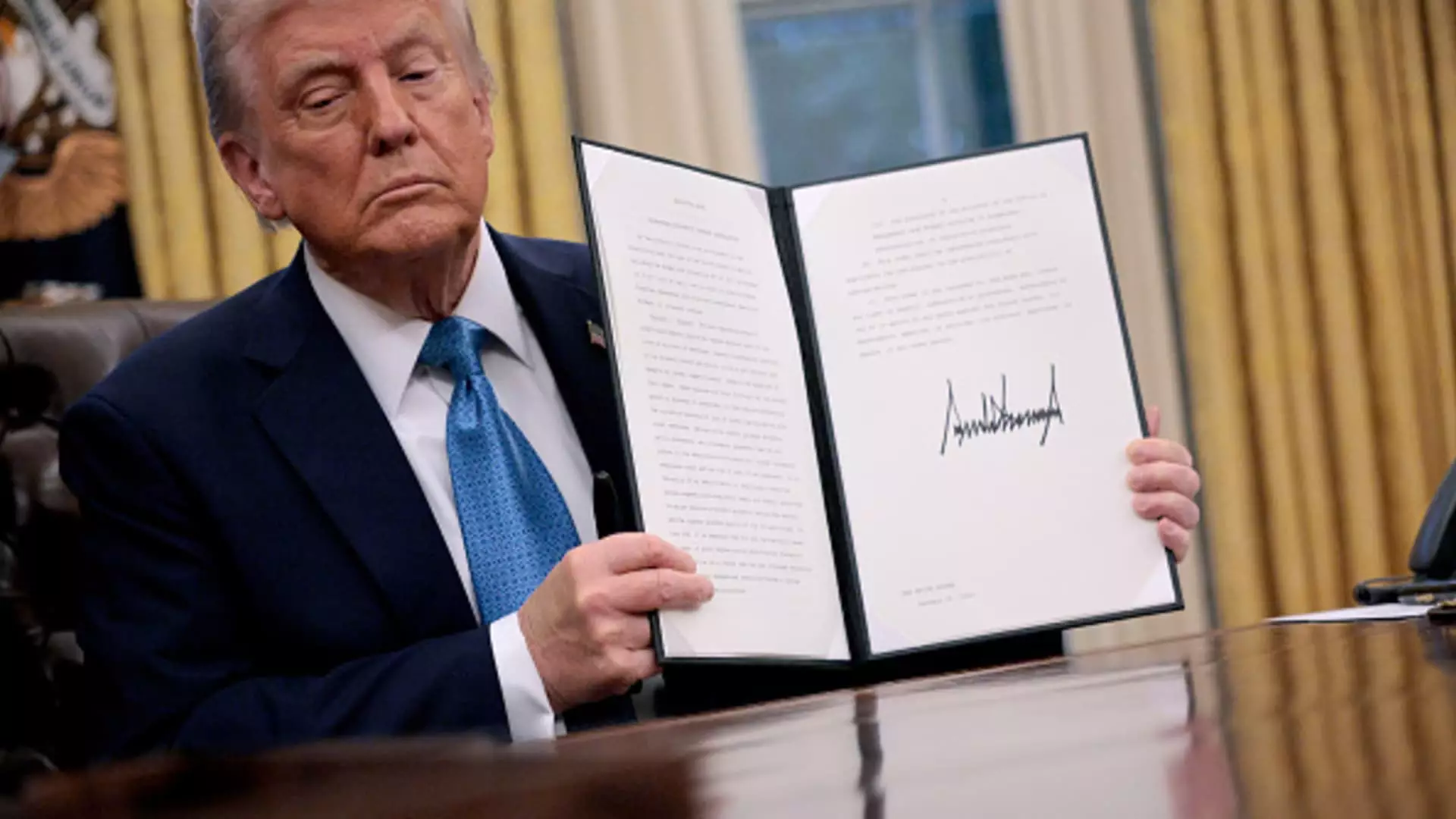The financial landscape of the United States has entered a turbulent phase following recent initiatives proposed by former President Donald Trump to impose significant tariffs on goods from multiple countries, notably Mexico, Canada, and China. These unilateral trade actions threaten to ignite a global trade conflict, affecting an array of industries and shaking investor confidence. With a 25% tariff on goods from our neighboring countries and a 10% levy imposed on imports from China, the ramifications are already being felt across the stock market, prompting a reevaluation of the economic outlook.
The Immediate Fallout: Sector-Specific Impact
The onset of these tariffs has led to immediate repercussions, particularly for industries reliant on international supply chains. The U.S. auto industry is front and center, with major corporations like General Motors, Ford, and Stellantis poised to confront challenges stemming from disrupted supply chains. Given the nature of automobile manufacturing, where components frequently cross the U.S.-Canada-Mexico border, any additional costs or delays could necessitate a strategic overhaul in production methods.
Moreover, the beverage industry isn’t immune either. Constellation Brands, a leading alcohol importer from Mexico, is already witnessing considerable stock declines as fears of increased prices loom. Canada’s planned retaliation—potentially pulling American liquors from its government-run shelves—embodies the risk of escalated tensions that can strain bilateral trade relationships.
Broader Economic Ripple Effects
Beyond the immediate effects on specific sectors, the proposed tariffs raise critical questions about business confidence and consumer behavior. With companies like Chipotle Mexican Grill, which sources avocados from Mexico, facing mounting costs, customers may eventually bear the brunt of higher prices at restaurants and grocery stores. Similarly, sportswear retailers such as Nike and Lululemon could find their profit margins squeezed, as the majority of their manufacturing is based in China.
Lower-tier retailers like Dollar General and Five Below are particularly vulnerable, as they often rely on cost-effective imports to maintain competitive pricing. The potential for increased prices exacerbates inflationary pressures, which could dampen consumer spending and slow economic growth.
The logistical implications of tariffs extend to the rail industry as well. Companies like Union Pacific and Norfolk Southern stand to suffer from decreased freight flow, which could hinder their bottom line. Heavy tariffs not only complicate the movement of goods across borders but also lengthen supply chains, increasing the time and costs associated with transportation. This can further amplify the pressures on industries that hinge on just-in-time inventory management, leading to disruptions that can ripple through the economy.
In a rapidly evolving e-commerce landscape, companies like Temu and AliExpress could see their growth stunted by tariffs targeting a trade exemption that previously allowed goods under $800 to enter the U.S. without duties. This provision, known as “de minimis,” has been a crucial growth factor for budget online retailers. The removal of this exemption, alongside rising tariffs, could ultimately restructure the competitive landscape, diminishing the ability of smaller e-commerce platforms to operate profitably within the U.S. market.
Long-term Consequences: A Broader Perspective
As these tariffs loom large, the long-term consequences could reshape the fabric of the U.S. economy. The potential for a 5% sell-off in U.S. stocks, as predicted by financial analysts such as Goldman Sachs, signals growing anxiety among investors about the health of corporate earnings amidst escalating trade tensions.
The broader implications may compel companies to rethink their supply chains, potentially leading to a phased withdrawal from markets heavily dictated by tariffs, thereby altering the global economic framework. While the short-term effects are glaringly evident, the long-range consequences could shift trade dynamics, influence domestic production, and ultimately redefine the global marketplace as we know it.
The advent of tariffs introduces a complex layer of uncertainty for various sectors within the U.S. economy and further complicates international trade relationships. As industries jockey for position amid mounting disruptions, it remains imperative for stakeholders to stay vigilant, adapt strategies, and prepare for a landscape where trade wars might become a recurring theme rather than a fleeting challenge. Understanding these developments and their implications will be crucial for navigating the turbulent waters ahead.

